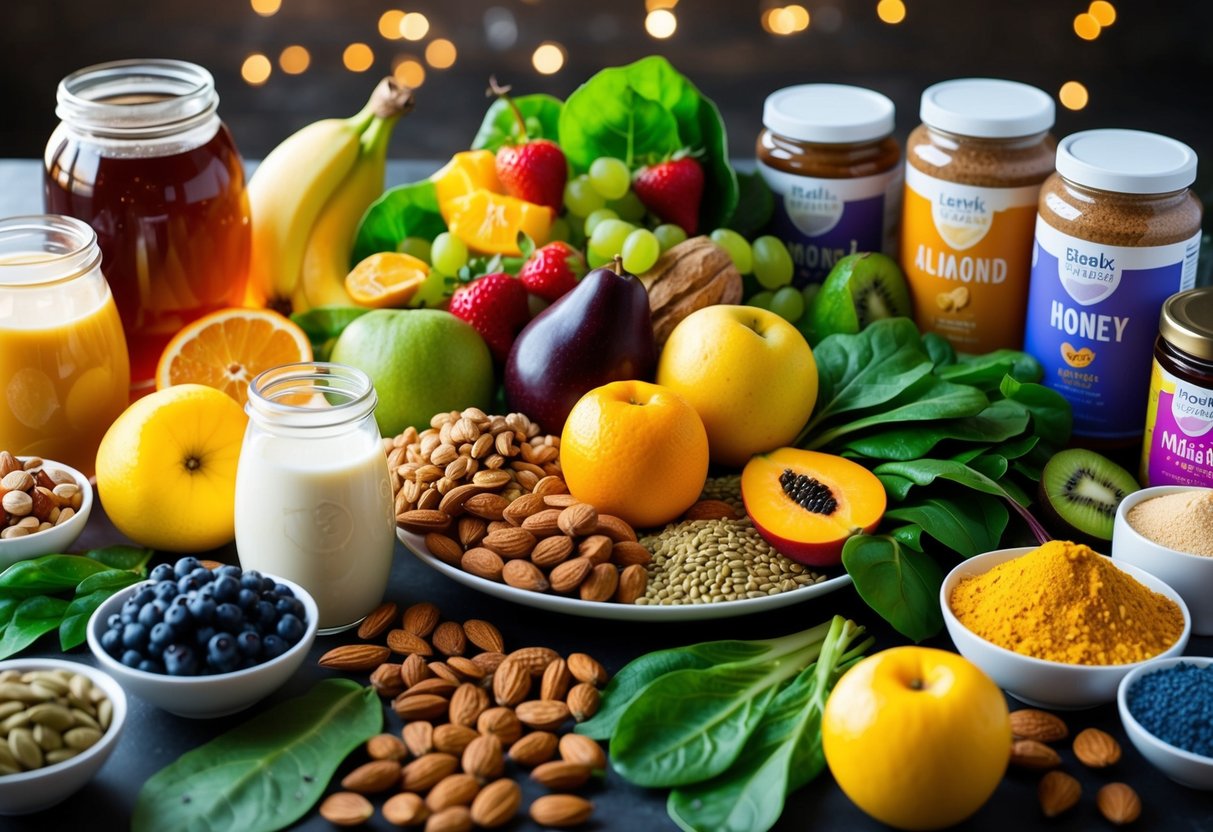The Ultimate DIY Smoothie Guide: Nutrient-Packed Recipes for Every Goal
Specialty Smoothie Recipes

Specialty smoothies cater to unique flavors and textures, often enhancing traditional recipes with exciting new ingredients. These creations can transform a regular drink into a nutritious and visually appealing meal or treat.
Smoothie Bowls
Smoothie bowls are thicker than regular smoothies and are typically consumed with a spoon. They offer a unique way to incorporate textures, adding toppings like nuts, seeds, and fresh fruits.
A spiced blueberry smoothie bowl pairs well with cinnamon and nutmeg to bring out warm flavors. Another option is the peanut butter-strawberry-kale smoothie bowl, which balances sweetness with greens. It provides a rich dose of nutrients while maintaining a pleasant taste. Blueberry smoothie bowls topped with granola and coconut shavings are also popular.
Themed Smoothie Creations
Themed smoothie creations allow for experimenting with flavors and tapping into seasonal or exotic ingredients. Consider a pumpkin pie smoothie, ideal for autumn with a blend of pumpkin puree, spices, and vanilla yogurt.
A chocolate smoothie with avocado adds creaminess and healthy fats, while maintaining a rich taste. Tropical flavors can be achieved with a coconut raspberry smoothie or tropical chia smoothie, providing a refreshing and energizing drink. These smoothies not only captivate the taste buds but also pack a punch with nutrients suitable for various dietary goals.
Texture and Taste Enhancements

Enhancing the texture and taste of smoothies involves choosing the right ingredients. Creaminess, spices, and the use of fresh and frozen fruits all contribute to a delicious and satisfying drink.
Creating a Creamy Base
A creamy texture can elevate any smoothie. Ingredients like Greek yogurt, avocado, and bananas are popular choices. Greek yogurt adds thickness and a rich, tangy flavor. Avocado offers a smooth, buttery feel without overpowering the taste. Bananas provide natural sweetness and a creamy foundation. For a dairy-free option, coconut milk or almond milk can be used, delivering a luscious texture. Adding a spoonful of oats or soaked chia seeds can also create a thicker consistency. Each of these ingredients can individually or collectively transform the mouthfeel of a smoothie, making it more indulgent and satisfying.
Using Spices and Extracts
Completing a smoothie with spices and extracts can unlock unique flavors. Cinnamon and nutmeg add warmth and complexity, elevating simple recipes. Vanilla extract is known for enhancing sweetness without adding extra sugars. Honey adds a touch of natural sweetness, balancing tangy or bitter notes. For those seeking a citrus kick, a squeeze of lemon juice can brighten the overall taste. It’s crucial to measure spices and extracts carefully, as a little goes a long way. The right combination can enhance and blend the natural flavors of the fruits and vegetables, providing depth and satisfaction.
Incorporating Fresh and Frozen Fruits
Incorporating a combination of fresh and frozen fruits can significantly impact texture and taste. Frozen fruits like berries, mango, and pineapple thicken the smoothie and create a chilly, refreshing sensation. Using frozen bananas can be particularly beneficial, as they add extra creaminess. Fresh fruits like kiwi and dates offer contrasting textures and vibrant flavors. They also add freshness that can balance out the dense consistency of frozen ingredients. Blending both types delivers a rich, flavorful smoothie with layers of taste and a satisfyingly cool texture. It’s a simple way to experiment with different flavors and find the perfect balance for personal preferences.



